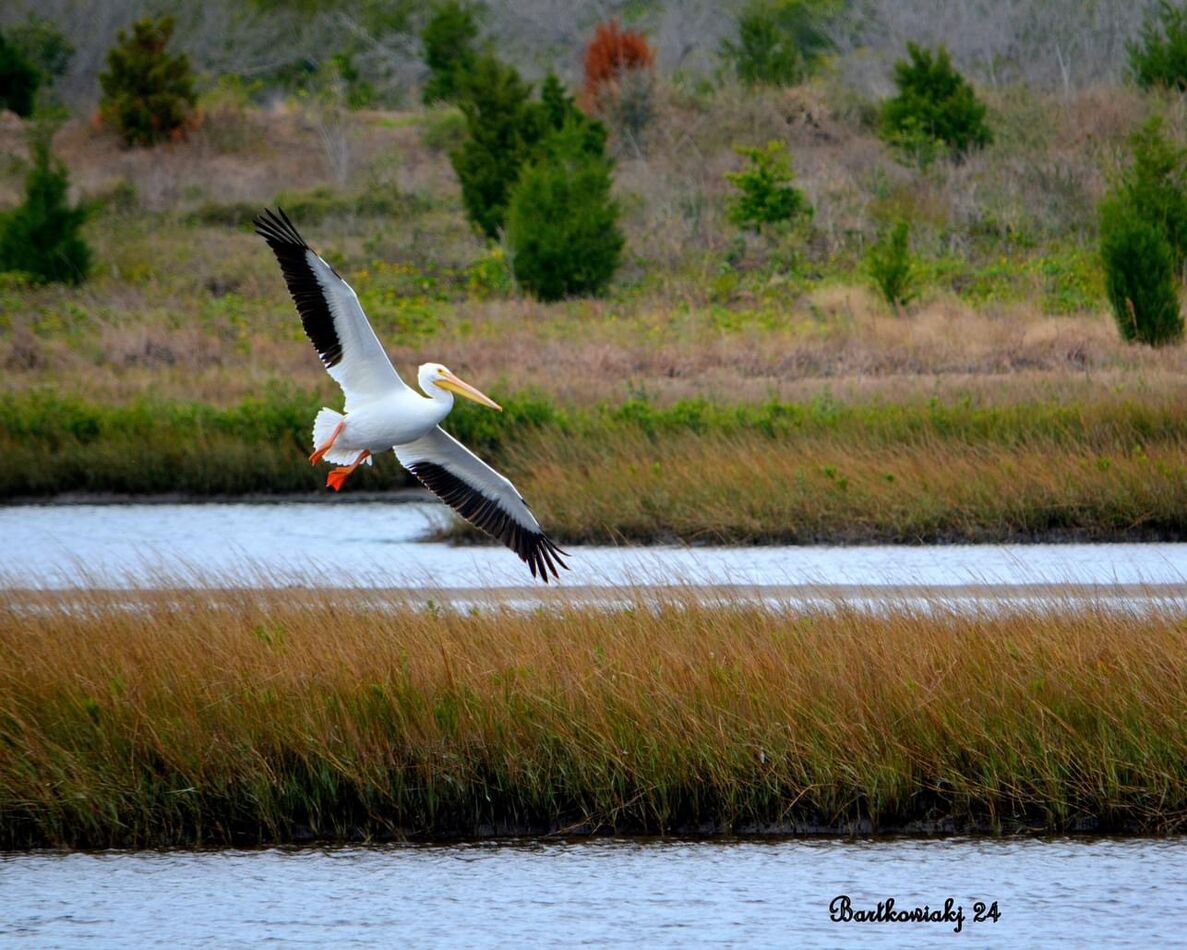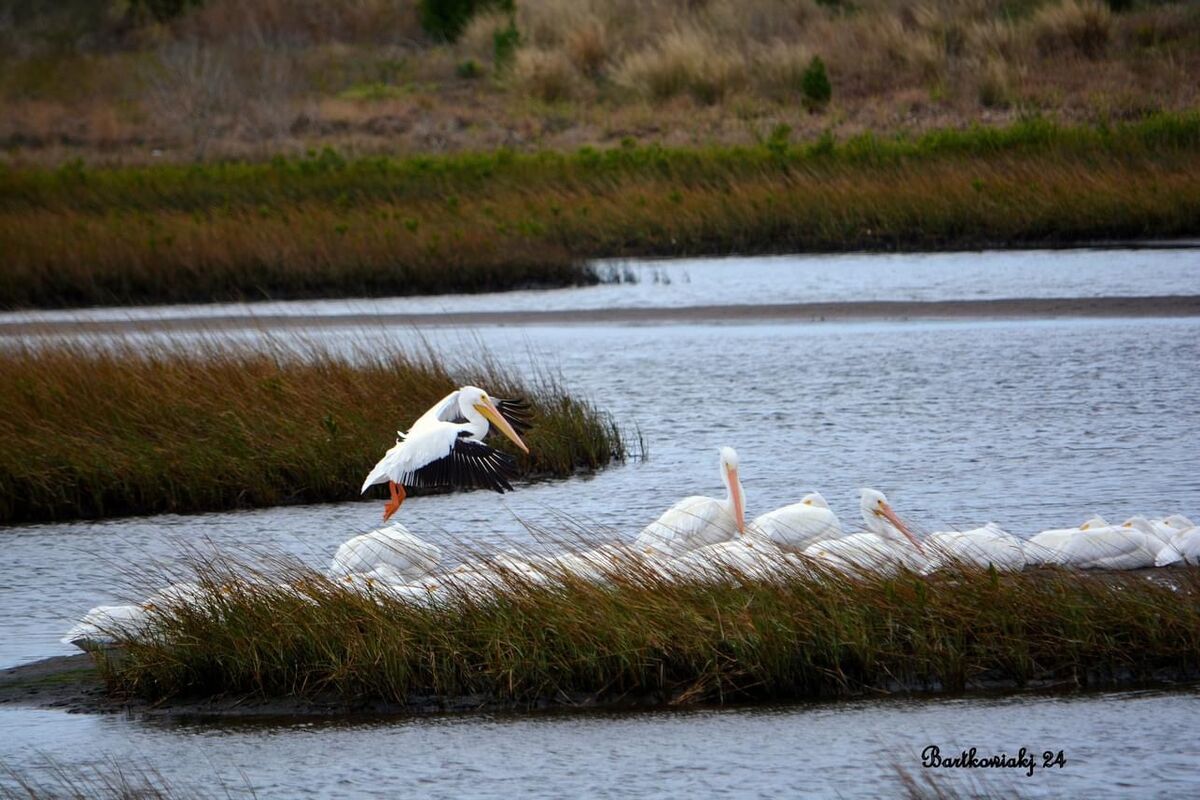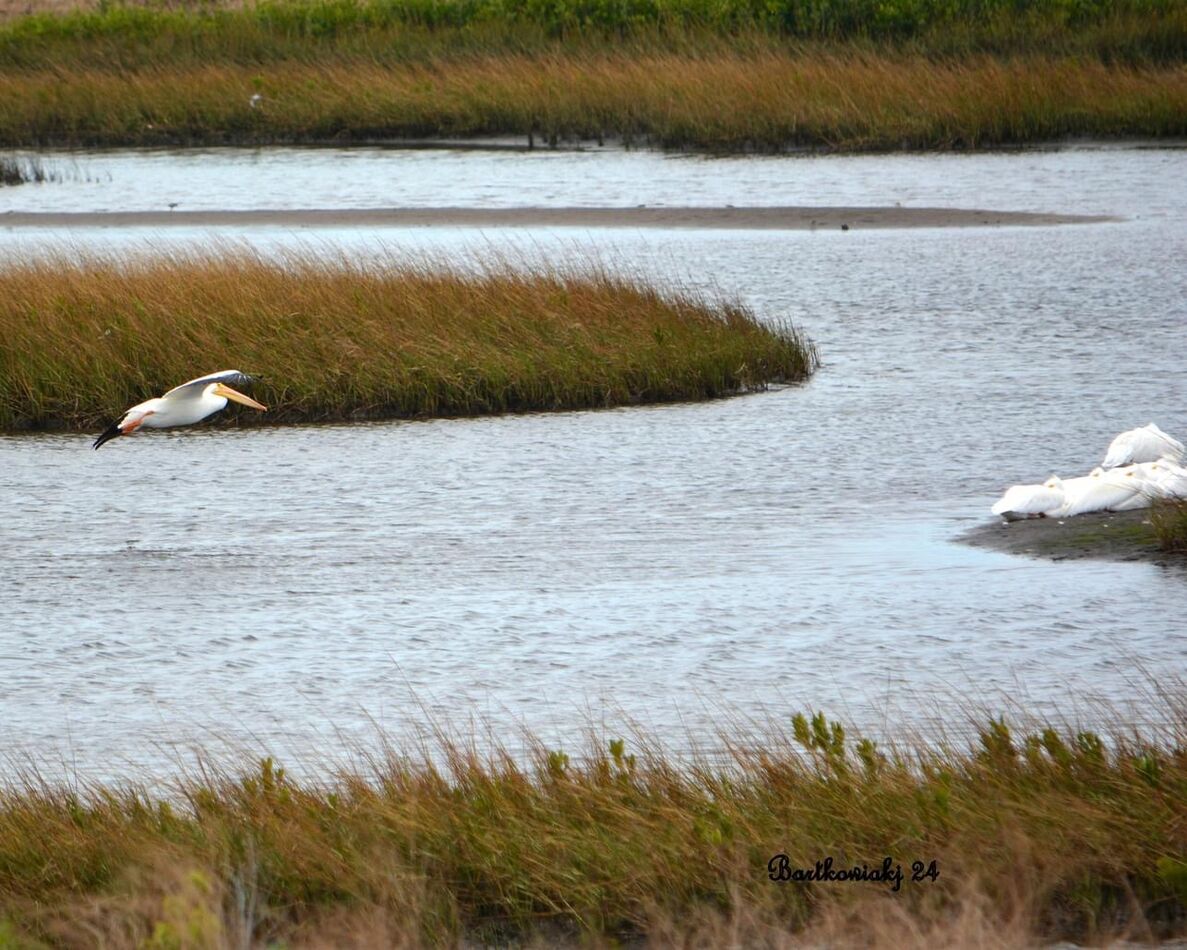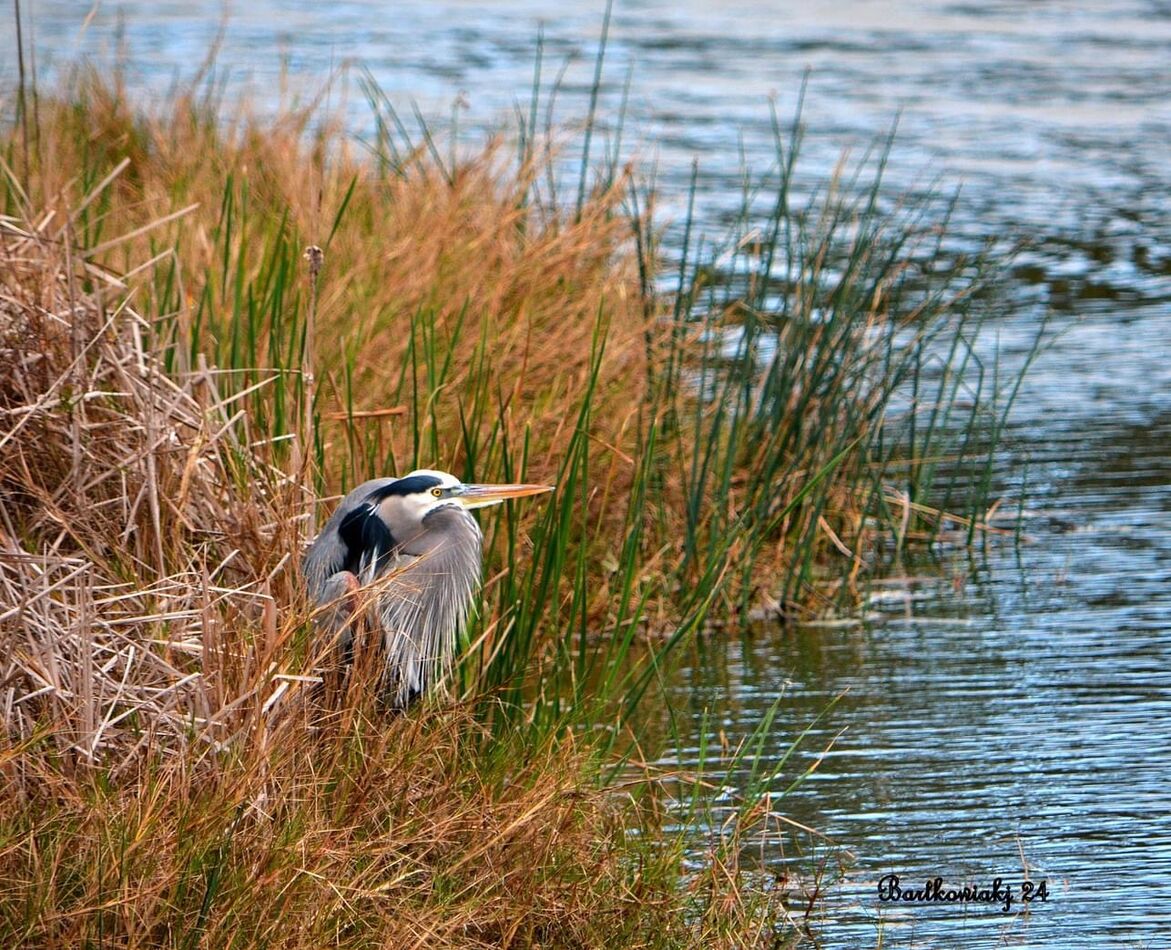Couple of questions on shooting
Jan 4, 2024 23:48:32 #
JimBart
Loc: Western Michigan
When you are shooting birds or BIF especially in manual what are your most frequently used settings (speed, aperture and iso) and focus point?
If you don’t shoot manual and set all 3 settings, what do you do. Why?
Reason for asking…. I’m looking for easier ways of shooting nature as I currently use 1/1000, F 5.6 - F8, and auto iso along with spot metering
Help me out with your technique if possible
Thanks a bunch
If you don’t shoot manual and set all 3 settings, what do you do. Why?
Reason for asking…. I’m looking for easier ways of shooting nature as I currently use 1/1000, F 5.6 - F8, and auto iso along with spot metering
Help me out with your technique if possible
Thanks a bunch
Jan 4, 2024 23:57:11 #
I always use the slowest shutterspeed possible for the type of bird and the available light. I use Canon's evaluative metering, i.e., metering the entire frame. Shooting in RAW, about +1 over the 0-mark (ETTR), again depending on the light, such as a clouds vs blue sky background and how much 'white' of the subject birds. I find a single center point is 'sharpest', but a 9-point zone tends to get more quality / reactive points on the moving subject, typically clustered around the frame center. My older DSLR doesn't let me off-set the metering in AUTO ISO, so I need to use a fixed ISO. I'd go with AUTO ISO and +1 EC if my camera could support that feature. Finally, I usually have an extender installed, so I'm force to f/8 or smaller, where f/11 is a good depth of field, again depending on the shooting (light) conditions.
Jan 5, 2024 00:12:50 #
I'm confused. I am guessing you have a digital camera with with most of the bells and whistles. Why in the world would you want to shoot in manual? I shoot a D 7200 and normally shoot birds and BIFs using using shutter priority of 1:2000, because my left hand shakes badly, ISO 1600+, back button auto focus and let the camera do the rest. I shoot in raw and let Topaz AI take care of the noise issues and Photoshop do the rest.
Jan 5, 2024 08:41:04 #
Curmudgeon wrote:
I'm confused. I am guessing you have a digital camera with with most of the bells and whistles. Why in the world would you want to shoot in manual? I shoot a D 7200 and normally shoot birds and BIFs using using shutter priority of 1:2000, because my left hand shakes badly, ISO 1600+, back button auto focus and let the camera do the rest. I shoot in raw and let Topaz AI take care of the noise issues and Photoshop do the rest.
For me, I want to control both the aperture and the shutterspeed. Sometimes, I need to consider the ISO too, such as it's too high and I need to give a little on either the shutterspeed or aperture to bring the ISO down.
The real magic of digital photography now resides in the newer / newest cameras is 'manual with EC and AUTO ISO'. This is really the cat's meow. The photographer just has to control the aperture and shutter and the Exposure Compensation of where the meter offsets from the 0-mark. The camera just keeps the ISO fluctuating to maintain that offset.
Jan 5, 2024 10:26:01 #
I know many professional bird photographers, and none of those shoot "auto iso" except in rare instances. Why, the camera meters typically will not sufficiently compensate for the white parts of birds and will result in blown out whites. And, unless your subject is going in and out of shadows, the intensity of the light on your subject is more or less constant while you have the shutter down; the exposure is not changing. Of coarse, while you are out in the field, conditions might change so you need to compensate for those changing conditions, but not in a split second except in very rare instances. So auto ISO is not a recommended starting point in most instances. Required shutter speeds are a function of the movement of your subject and your ability of holding your equipment without camera shake (big lenses are tough to manage and camera shake can make for unsharp captures). Image stabilization in newer cameras is pretty amazing and can help a lot with longer lenses especially, but sufficient shutter speed can make a huge difference. When I start out for a session, my first shutter speed setting is 1/4000. Might be overkill, but something unexpected might happen. (Once I had a female Belted Kingfisher fly into my frame while I was photographing the perched male. My shutter speed was set too low to freeze the female because I was thinking about the image quality of the photo of the male, trying to get my iso lower by lowering my shutter speed. The result, nice, sharp high quality images of the perched male, but the female flying into the frame; soft due to too low a shutter speed. The winning image would have been the sharp flying female. Lesson learned.). Additionally, camera noise due to his ISO's is not the issue it used to be. Sensors are better and post processing software is so good, noise due to high ISO's is not the issue it used to be. You shouldn't be afraid of ISO's in the range of 3,000 to 4,000 or more allowing for higher shutter speeds. Regarding aperture; wide open for the most part. Closing down apertures for increased depth of field provides very little advantage with long lenses unless you are pretty close to your subject. There are times when you can get close and an increase in depth of field can help. But generally speaking wide open is where to start. More importantly is to make sure you have the eye in focus. Many of the newer mirrorless cameras have "eye" auto focus, which is pretty amazing, started by Sony!😄
Anyway, that's my $.02 and others will have other opinions.
Anyway, that's my $.02 and others will have other opinions.
Jan 5, 2024 11:45:14 #
flyboy61
Loc: The Great American Desert
First, let me identify my biases: I don't back-button focus or shoot RAW.
Shutter priority, usually. Auto ISO, AFC Group, let the aperture go where it wants, because the usual distances allow for sufficient DOF.
Matrix metering for 90% of my photoeaux, Sometimes narrow center weighted, depending on conditions. WHAT is the SUBJECT? Main emphasis! Exposure compensation + for dark against light background, - for light against dark BG. Photo beforehand, so evaluation/compensation can be made. Don't forget to reset. Yes, you will!
Sufficient panning skills...Practice! Now...having said that...set everything you can beforehand so as to not be fiddling with settings, buttons, rethinking, etc. and miss the "moment". Like a buddy of mine Deer hunting, with his riflescope set at 8 power...nice buck sighted, BUT he just HAD to have his scope set at 4X, and you can imagine the rest! That was the last Buck either of us saw that day!
Shutter priority, usually. Auto ISO, AFC Group, let the aperture go where it wants, because the usual distances allow for sufficient DOF.
Matrix metering for 90% of my photoeaux, Sometimes narrow center weighted, depending on conditions. WHAT is the SUBJECT? Main emphasis! Exposure compensation + for dark against light background, - for light against dark BG. Photo beforehand, so evaluation/compensation can be made. Don't forget to reset. Yes, you will!
Sufficient panning skills...Practice! Now...having said that...set everything you can beforehand so as to not be fiddling with settings, buttons, rethinking, etc. and miss the "moment". Like a buddy of mine Deer hunting, with his riflescope set at 8 power...nice buck sighted, BUT he just HAD to have his scope set at 4X, and you can imagine the rest! That was the last Buck either of us saw that day!

Jan 5, 2024 12:20:20 #
JimBart wrote:
When you are shooting birds or BIF especially in manual what are your most frequently used settings (speed, aperture and iso) and focus point?
If you don’t shoot manual and set all 3 settings, what do you do. Why?
Reason for asking…. I’m looking for easier ways of shooting nature as I currently use 1/1000, F 5.6 - F8, and auto iso along with spot metering
Help me out with your technique if possible
Thanks a bunch
If you don’t shoot manual and set all 3 settings, what do you do. Why?
Reason for asking…. I’m looking for easier ways of shooting nature as I currently use 1/1000, F 5.6 - F8, and auto iso along with spot metering
Help me out with your technique if possible
Thanks a bunch
Jim, I went through your bird pics in the gallery. I don't see a lot of BIF. You must be practicing / preparing?
Your EXIF doesn't come over with the lens ID. You'd want to consider, from technical reviews of your lens, what might be the sharpest apertures for your lens. If it doesn't matter much from the specs, just consider the depth of field.
You might want to consider a few composition ideas:
1, Find a situation where the sun / daylight is directly behind you and the birds are flying at / over your position.
2, Find a situation where static subjects are facing / turning / approaching your position. The rear-view of the subject is rarely a keeper image.
3, Consider your metering approach. I'm seeing a lot of blown highlights, indicating your spot metering approach is too small or incorrectly placed for the camera to protect your highlights (whites) from over exposure. For Nikon, matrix metering considers the entire frame and you can use your Exposure Composition dial or your manual settings to position the meter to the right of the 0-mark, but not too much as to lose the details of the highlights.
4, Use a selectively positioned, off-center AF point, placed specifically on the bird's eye, or 'face' if the distance is that great.
5, Use a tripod and patience. My favorite approach for a static subject is get the camera, exposure, tripod and AF point set in preparation for the bird to 'turn' to the best composition, such as a bird preening and then turning / standing in a way that 'matches' to my AF point. I burst a few images each time (only) when they turn toward me and 'match' to my AF point.
6, Use the AF-C 'continuous' auto-focus so the camera / lens are constantly focusing when you half-press the shutter, or 'hold' the assigned BFF, if used.
Jan 5, 2024 15:18:23 #
JimBart wrote:
When you are shooting birds or BIF especially in manual what are your most frequently used settings (speed, aperture and iso) and focus point?
If you don’t shoot manual and set all 3 settings, what do you do. Why?
Reason for asking…. I’m looking for easier ways of shooting nature as I currently use 1/1000, F 5.6 - F8, and auto iso along with spot metering
Help me out with your technique if possible
Thanks a bunch
If you don’t shoot manual and set all 3 settings, what do you do. Why?
Reason for asking…. I’m looking for easier ways of shooting nature as I currently use 1/1000, F 5.6 - F8, and auto iso along with spot metering
Help me out with your technique if possible
Thanks a bunch
It all depends on the camera and its functions. I shoot a Canon R5 setup with a custom function just for my BIF and animals in general. I use several different Canon lenses depending on what I’m shooting and the conditions.
Check out Jan Wagner’s YouTube videos on camera setups. He’s an incredible bird photographer although he shoots mostly portraits his sets are great for BIF also. See my recent post “Local Lakes”. I used many of his techniques and settings for that shoot.
Jan 5, 2024 18:02:08 #
JimBart
Loc: Western Michigan
Thanks guys for the input. I value it immensely and will try implementing each suggestion
The lenses I primarily use on my Nikon 7100 are a Nikon 55-300 or a Sigma 150-600. I also have a 1.4 extender but rarely use it.
Some examples of recent shots are attached using the 55-300 fully extended and the settings as mentioned.
I did not have the 150-600 readily available
The lenses I primarily use on my Nikon 7100 are a Nikon 55-300 or a Sigma 150-600. I also have a 1.4 extender but rarely use it.
Some examples of recent shots are attached using the 55-300 fully extended and the settings as mentioned.
I did not have the 150-600 readily available
Jan 5, 2024 18:05:05 #
JimBart wrote:
Thanks guys for the input. I value it immensely and will try implementing each suggestion
The lenses I primarily use on my Nikon 7100 are a Nikon 55-300 or a Sigma 150-600. I also have a 1.4 extender but rarely use it.
Some examples of recent shots are attached using the 55-300 fully extended and the settings as mentioned.
I did not have the 150-600 readily available
The lenses I primarily use on my Nikon 7100 are a Nikon 55-300 or a Sigma 150-600. I also have a 1.4 extender but rarely use it.
Some examples of recent shots are attached using the 55-300 fully extended and the settings as mentioned.
I did not have the 150-600 readily available
What a fabulous group of shots, Jim, and your subjects are awesome 🥇🥇🥇🥇🥇
Jan 8, 2024 17:09:33 #
Curmudgeon wrote:
I'm confused. I am guessing you have a digital camera with with most of the bells and whistles. Why in the world would you want to shoot in manual? I shoot a D 7200 and normally shoot birds and BIFs using using shutter priority of 1:2000, because my left hand shakes badly, ISO 1600+, back button auto focus and let the camera do the rest. I shoot in raw and let Topaz AI take care of the noise issues and Photoshop do the rest.


Jan 8, 2024 17:10:19 #
JimBart wrote:
Thanks guys for the input. I value it immensely and will try implementing each suggestion
The lenses I primarily use on my Nikon 7100 are a Nikon 55-300 or a Sigma 150-600. I also have a 1.4 extender but rarely use it.
Some examples of recent shots are attached using the 55-300 fully extended and the settings as mentioned.
I did not have the 150-600 readily available
The lenses I primarily use on my Nikon 7100 are a Nikon 55-300 or a Sigma 150-600. I also have a 1.4 extender but rarely use it.
Some examples of recent shots are attached using the 55-300 fully extended and the settings as mentioned.
I did not have the 150-600 readily available
Nice captures
If you want to reply, then register here. Registration is free and your account is created instantly, so you can post right away.








